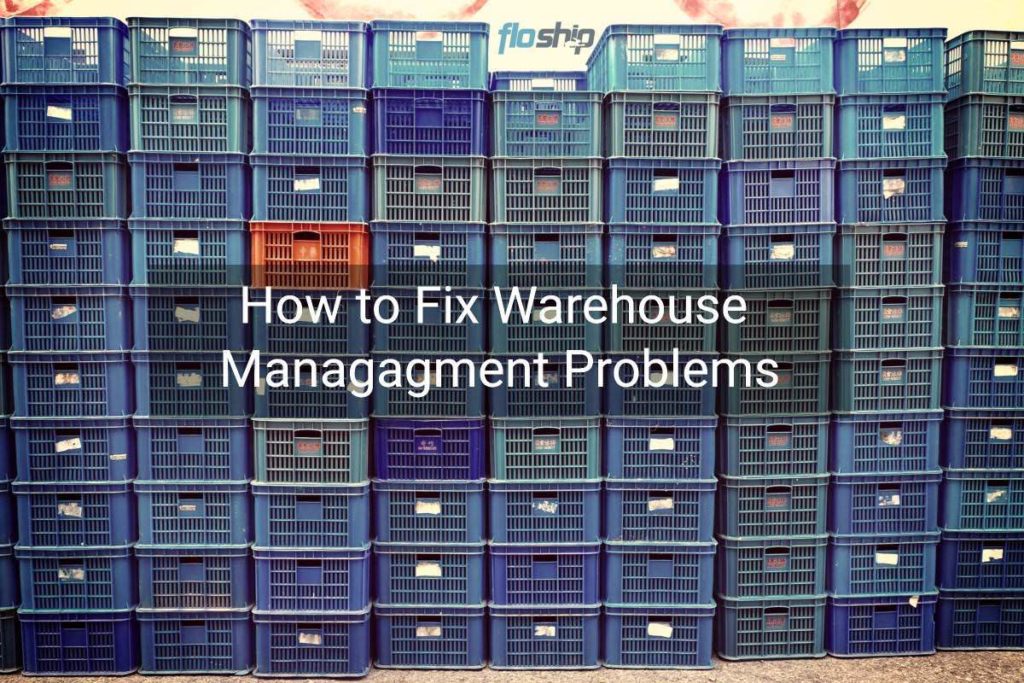It all starts at the warehouse.
When a customer puts in an order, the company must have efficient processes in place to move product from that location to wherever the customer needs it.
Warehouses are the mission-critical link in the supply chain. If you are in charge of purchasing or shipping, then here’s how to fix some of the most common problems you’re facing.
Poor Inventory Accuracy
In the old days, a paper and pen was all you needed. Today’s complex shipping processes mean you need to switch to automated solutions for the same job. Without strict inventory control, you can’t be sure what’s shipped, what’s out of stock, and where a customer’s order is.
Poor inventory accuracy is usually caused by not having the right automation systems in place.
A warehouse inventory management system needs to have a system that monitors key aspects of the order and shipping process.
Five Key Warehouse Management Focus Areas
- Order management
- Asset tracking
- Service management
- Product identification
- Inventory optimization
Order management is important, because you want the ability to reorder when stock is low.
If this is automated, the risk of backorders is reduced. Any good tracking system will incorporate barcode, radio-frequency identification, and wireless tracking technology.
There’s nothing worse than not knowing where your product is in the warehouse or in shipping.
When you run a service-based business, you can tag supplies involved in your business and incorporate them into your overall pricing structure.
Take a cleaning business, for example: you will want to cover your overhead, so it makes sense to use inventory management to calculate the total cost of supplies per job. Ordinarily, this would be difficult to do, but with automated systems, it’s much easier.
Identifying products is also easy with modern barcodes and barcode scanners.
Data about a product is entered into the system, and then the barcode is tagged to that product. When the product is scanned, information about it is displayed on a computer screen.

Radio-frequency identification is another method for tracking products, as are QR codes and NFC tags. They all accomplish the same basic task of tagging products in the warehouse with data entered into a database.
Inventory optimization should cover things like your company’s reorder point (when you need to reorder products), order quantity, lead demand, and stock cover, as well as accuracy auditing to ensure your data is valid and forecasts are accurate.
Inventory Accounting And Location
Inventory oversight means you know both general and specific facts about your inventory.
A lack of oversight may cause a buildup of inefficiencies, which will slow operations and increase your internal costs. This will have downstream effects too, like slowed order processing.
Pickers will take longer to fulfill an order, slowing down the loading process and creating blockages in the shipping chain.
Expensive and Redundant Processes
Some processes are inefficient because they’re redundant.
For example, it’s common for a worker to pass a pick ticket through several hands on the floor. He or she might send it to a checker, who then passes it to a stager, and this person sends it on to the loader.
These are handoffs that simply don’t need to happen.
Modern QR code, barcode, NFC, and other wireless technologies eliminate the need for manual tracking and processing steps.
Mostly, these will be found in automated warehouses, where the workers don’t need to touch the product, or where handling is minimized.
Inefficient Space Utilization
Modern automation in warehouses has all but eliminated the need for onsite workers to do jobs like picking.
Automated picking and putaway using robots, for example, cuts down on labor costs and wear and tear.
However, many warehouses are still not automated. They still use manual pickers, packers, and loaders to get the job done. Unfortunately, this puts a lot of strain on operations and slows down shipping.
Each warehouse needs to be optimized for its product.
Because of this, different automation technologies must be used and not all warehouses can automate all processes. The technology either doesn’t exist yet or is cost prohibitive.
Still, companies should constantly work toward such automation to reduce inefficiencies and improve shipping and processing times.
Not only does it save the company time, it makes for a more satisfied customer.
More Warehousing Optimization Tips
- E-commerce and the Rise of 3rd Party Integrated Fulfillment Warehouses for Small Business
- The Complete Guide to Shopify Order Fulfillment’s Third-Party Warehouses
- Can an Order Fulfillment Warehouse Reduce Your Overhead?

Ready To Upgrade Your Logistic Solution?
Speak to Floship ecommerce logistic consultant about improving your global support chain today





